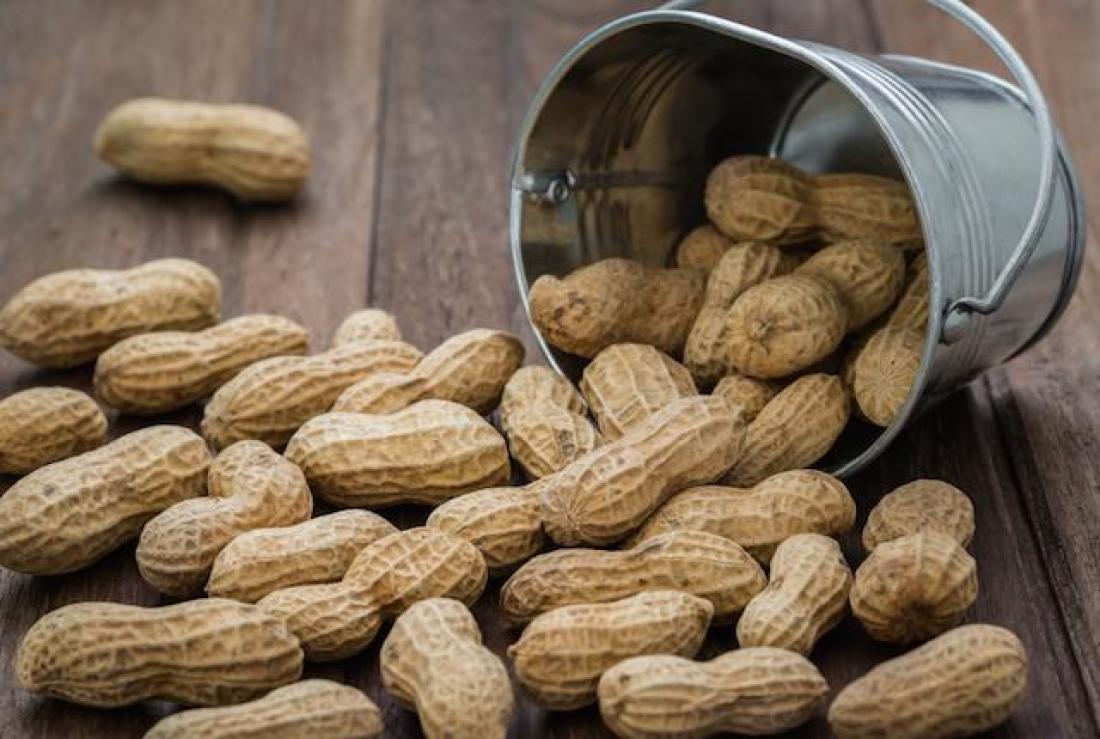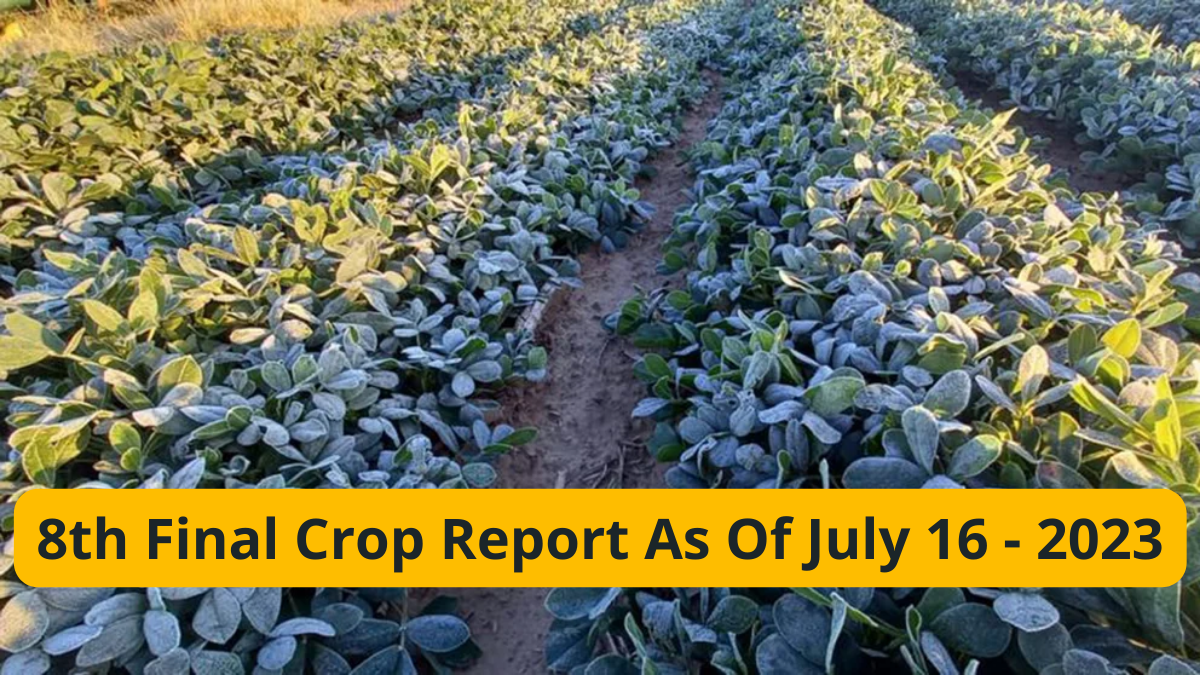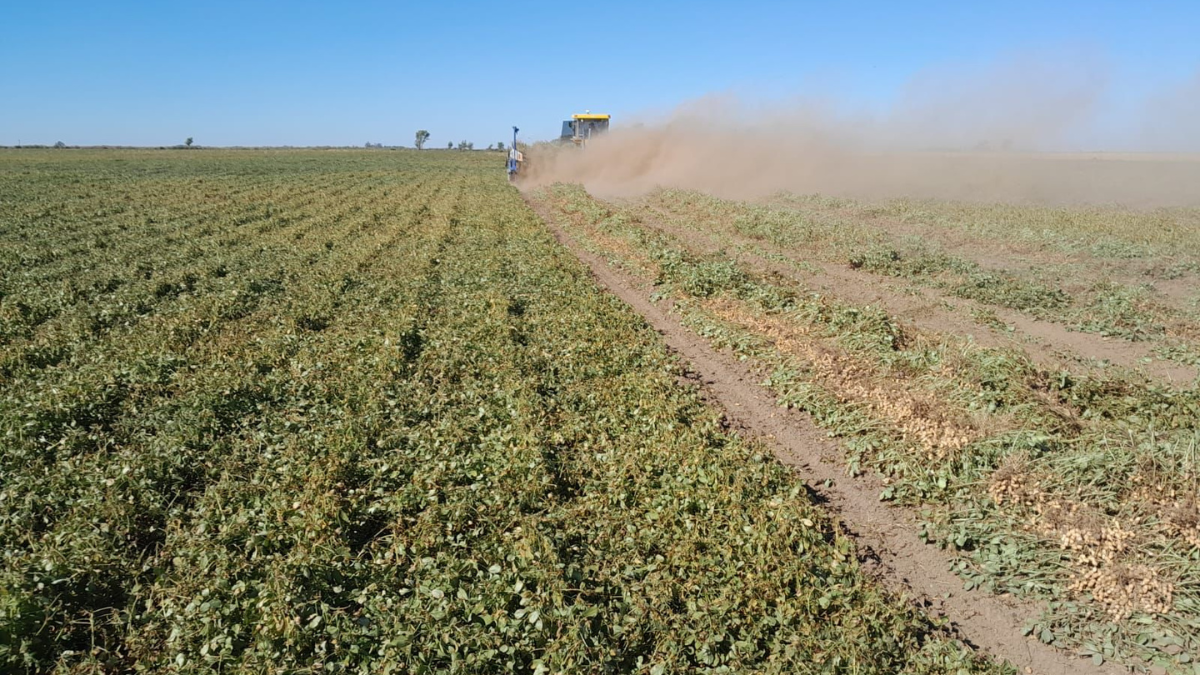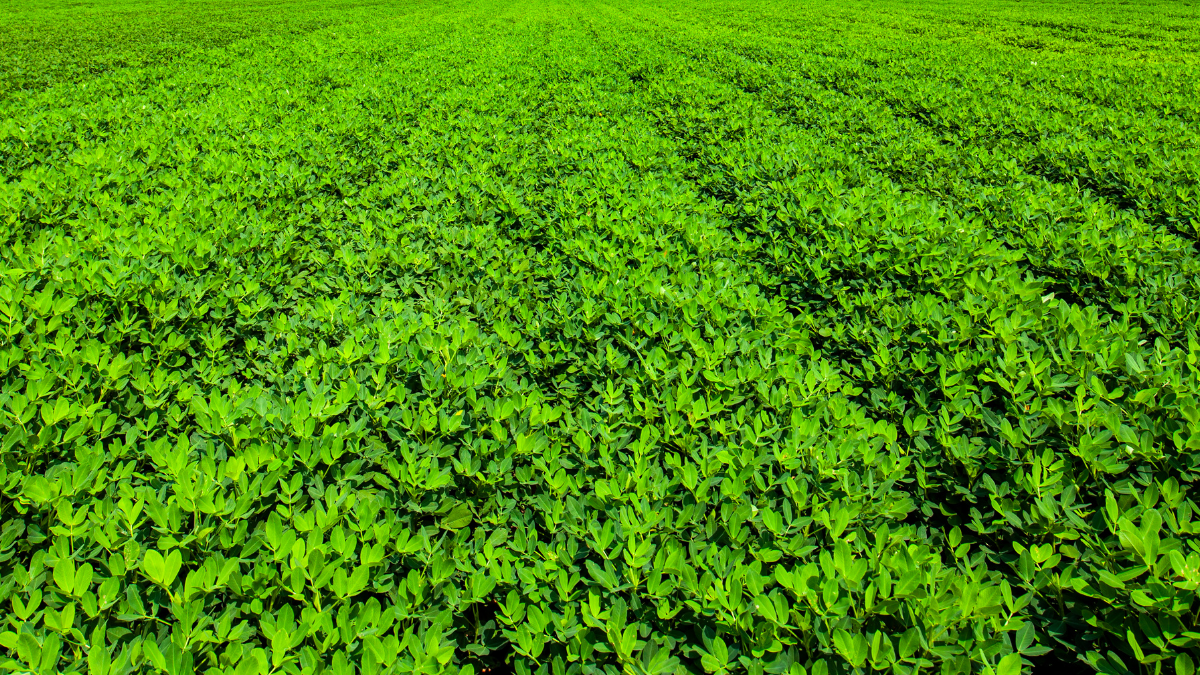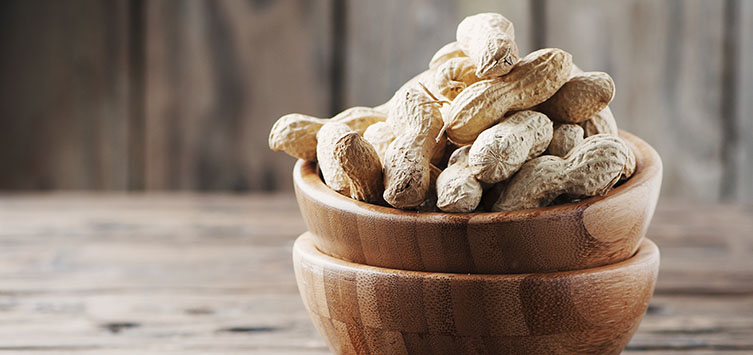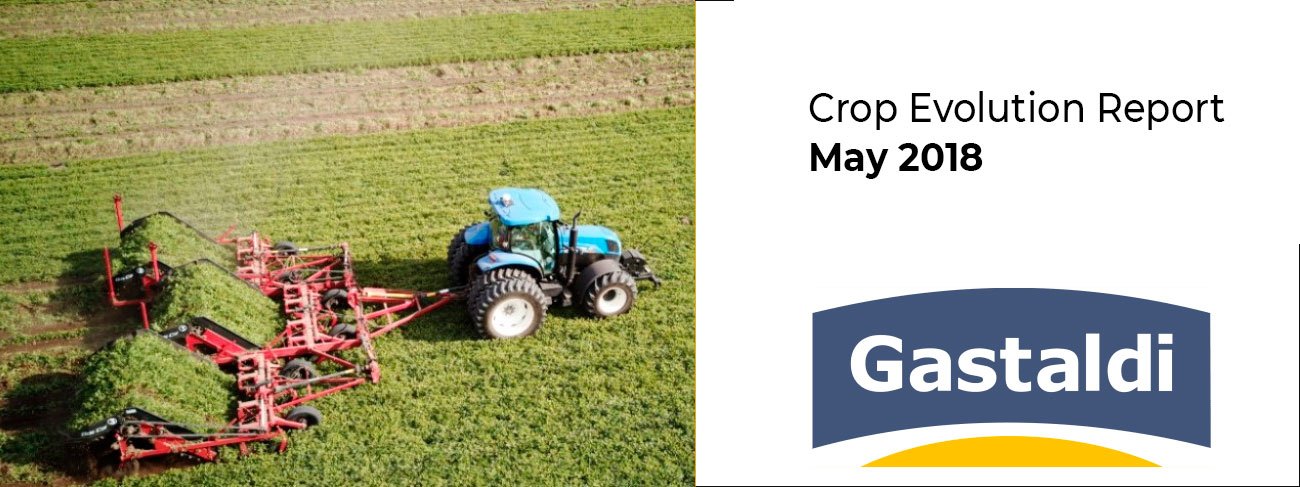0.25 cup
(36.50 grams)
GI: low
This chart graphically details the %DV that a serving of Peanuts provides for each of the nutrients of which it is a good, very good, or excellent source according to our Food Rating System. Additional information about the amount of these nutrients provided by Peanuts can be found in the Food Rating System Chart. A link that takes you to the In-Depth Nutritional Profile for Peanuts, featuring information over 80 nutrients, can be found under the Food Rating System Chart.
- Health Benefits
- Description
- History
- How to Select and Store
- Tips for Preparing and Cooking
- How to Enjoy
- Individual Concerns
- Nutritional Profile
- References
Health Benefits
In addition to being every kid’s (and many grownup kid’s) favorite sandwich filling, peanuts pack a serious nutritional punch and offer a variety of health benefits.
Your Heart Will Go Nuts for Peanuts
Peanuts are rich in monounsaturated fats, the type of fat that is emphasized in the heart-healthy Mediterranean diet. Studies of diets with a special emphasis on peanuts have shown that this little legume is a big ally for a healthy heart. In one such randomized, double-blind, cross-over study involving 22 subjects, a high monounsaturated diet that emphasized peanuts and peanut butter decreased cardiovascular disease risk by an estimated 21% compared to the average American diet.
In addition to their monounsaturated fat content, peanuts feature an array of other nutrients that, in numerous studies, have been shown to promote heart health. Peanuts are good sources of vitamin E, niacin, folate, protein and manganese. In addition, peanuts provide resveratrol, the phenolic antioxidant also found in red grapes and red wine that is thought to be responsible for the French paradox: the fact that in France, people consume a diet that is not low in fat, but have a lower risk of cardiovascular disease compared to the U.S. With all of the important nutrients provided by nuts like peanuts, it is no wonder that numerous research studies, including the Nurses’ Health Study that involved over 86,000 women, have found that frequent nut consumption is related to reduced risk of cardiovascular disease.
Peanuts Rival Fruit as a Source of Antioxidants
Not only do peanuts contain oleic acid, the healthful fat found in olive oil, but new research shows these tasty legumes are also as rich in antioxidants as many fruits.
While unable to boast an antioxidant content that can compare with the fruits highest in antioxidants, such as pomegranate, roasted peanuts do rival the antioxidant content of blackberries and strawberries, and are far richer in antioxidants than apples, carrots or beets. Research conducted by a team of University of Florida scientists, published in the journal Food Chemistry, shows that peanuts contain high concentrations of antioxidant polyphenols, primarily a compound called p-coumaric acid, and that roasting can increase peanuts’ p-coumaric acid levels, boosting their overall antioxidant content by as much as 22%.
Peanuts’ Antioxidants Key to their Heart-Health Benefits
Research published in the British Journal of Nutrition (Blomhoff R, Carlsen MH), which identified several nuts among plant foods with the highest total antioxidant content, suggests nut’s high antioxidant content may be key to their cardio-protective benefits.
Nuts’ high antioxidant content helps explain results seen in the Iowa Women’s Health Study in which risk of death from cardiovascular and coronary heart diseases showed strong and consistent reductions with increasing nut/peanut butter consumption. Total death rates decreased 11% and 19% for nut/peanut butter intake once per week and 1-4 times per week, respectively.
Even more impressive were the results of a review study of the evidence linking nuts and lower risk of coronary heart disease, also published in the British Journal of Nutrition. (Kelly JH, Sabate J.) In this study, researchers looked at four large prospective epidemiological studies—the Adventist Health Study, Iowa Women’s Study, Nurses’ Health Study and the Physician’s Health Study. When evidence from all four studies was combined, subjects consuming nuts at least 4 times a week showed a 37% reduced risk of coronary heart disease compared to those who never or seldom ate nuts. Each additional serving of nuts per week was associated with an average 8.3% reduced risk of coronary heart disease.
Practical Tip: To lower your risk of cardiovascular and coronary heart disease, enjoy a handful of peanuts or other nuts, or a tablespoon of nut butter, at least 4 times a week.
Potentially Reduced Risk of Stroke Based on Preliminary Animal Studies
Resveratrol is a flavonoid first studied in red grapes and red wine, but now also found to be present in peanuts. In animal studies on resveratrol itself (the purified nutrient given in intravenous form, not the food form), this phytonutrient has been determined to improve blood flow in the brain by as much as 30%, thus greatly reducing the risk of stroke, according to the results of a laboratory animal study published in the Journal of Agricultural and Food Chemistry.
Lead researcher Kwok Tung Lu hypothesized that resveratrol exerted this very beneficial effect by stimulating the production and/or release of nitric oxide (NO), a molecule made in the lining of blood vessels (the endothelium) that signals the surrounding muscle to relax, dilating the blood vessel and increasing blood flow. In the animals that received resveratrol, the concentration of nitric oxide (NO) in the affected part of the brain was 25% higher than that seen not only in the ischemia-only group, but even in the control animals.
The jury is still out on peanuts however, since they contain far less resveratrol than the amounts used in the above study, and also less than the amount provided by red wine. An ounce of red wine can provide as much as 1,000 micrograms of resveratrol, and it almost always provides over 75 micrograms. The same ounce of peanut butter can only provide about 50 micrograms of resveratrol. Still, routine consumption of peanuts or peanut butter might turn out to be significant in terms of the resveratrol provided by this food.
Peanuts Protective, but Pickled Foods Increase Risk of Colon Cancer
A number of studies have shown that nutrients found in peanuts, including folic acid, phytosterols, phytic acid (inositol hexaphosphate) and resveratrol, may have anti-cancer effects. A rich source all these nutrients—including the phytosterol beta-sisterol, which has demonstrated anti-cancer actions—peanuts have long been considered a likely candidate as a colon cancer-preventive food.(Awad AB, Chan KC, et al., Nutr Cancer)
Colorectal cancer is the second most fatal malignancy in developed countries and the third most frequent cancer worldwide. In Taiwan, not only has incidence of colon cancer increased, but the likelihood of dying from the disease rose 74% from 1993 to 2002.
Taiwanese researchers decided to examine peanuts’ anti-colon cancer potential and conducted a 10-year study involving 12,026 men and 11,917 women to see if eating peanuts might affect risk of colon cancer.(Yeh CC, You SL, et al., World J Gastroenterol)
Researchers tracked study participants’ weekly food intake, collecting data on frequently consumed foods and folk dishes such as sweet potato, bean products, peanut products, pickled foods, and foods that contained nitrates or were smoked.
Risk of colon cancer was found to be highly correlated with both peanuts, which greatly lessened risk, and pickled foods, which greatly increased risk, particularly in women.
Eating peanuts just 2 or more times each week was associated with a 58% lowered risk of colon cancer in women and a 27% lowered risk in men.
In women, but not in men, eating pickled foods 2 or more times a week more than doubled the likelihood of developing colon cancer risk for women, increasing their risk 215%.
Practical Tips: To help prevent colon cancer, avoid pickled foods, but enjoy peanuts at least twice each week. In addition to that old stand-by, the PB&J sandwich, try some of the following:
- Spread peanut butter on your morning waffle, whole grain toast or mid-morning crackers.
- Add a tablespoon of peanut butter to your morning smoothie.
- Enjoy a handful of dry roasted peanuts with a glass of tomato juice as an afternoon snack.
- Combine peanut butter, coconut milk, and ready-to-use Thai red or green curry paste for a quick, delicious sauce. Pour over healthy sautéed vegetables. Use as a cooking sauce for tofu or salmon.
- Toss cooked brown rice with sesame oil, chopped peanuts, scallions, sweet red pepper, parsley and currants.
When purchasing peanut butter, be sure to read the label. Hydrogenated(trans-) fats and sugar are often added to peanut butter. Buy organic and choose brands that contain peanuts, salt—and nothing else!
Help Prevent Gallstones
Twenty years of dietary data collected on over 80,000 women from the Nurses’ Health Study shows that women who eat least 1 ounce of nuts, peanuts or peanut butter each week have a 25% lower risk of developing gallstones. Since 1 ounce is only 28.6 nuts or about 2 tablespoons of nut butter, preventing gallbladder disease may be as easy as packing one peanut butter and jelly sandwich (be sure to use whole wheat bread for its fiber, vitamins and minerals) for lunch each week, having a handful of peanuts as an afternoon pick me up, or tossing some peanuts on your oatmeal or salad.
Protect against Alzheimer’s and Age-related Cognitive Decline
Research published in the Journal of Neurology, Neurosurgery and Psychiatry indicates regular consumption of niacin-rich foods like peanuts provides protection against Alzheimer’s disease and age-related cognitive decline.
Researchers from the Chicago Health and Aging Project interviewed over 3,000 Chicago residents aged 65 or older about their diet, then tested their cognitive abilities over the following six years.
Those getting the most niacin from foods (22 mg per day) were 70% less likely to have developed Alzheimer’s disease than those consuming the least (about 13 mg daily), and their rate of age-related cognitive decline was significantly less. One easy way to boost your niacin intake is to snack on a handful of peanuts—just a quarter cup provides about a quarter of the daily recommended intake for niacin (16 mg per day for men and 14 for women).
Eating Nuts Lowers Risk of Weight Gain
Although nuts are known to provide a variety of cardio-protective benefits, many avoid them for fear of weight gain. A prospective study published in the journal Obesity shows such fears are groundless. In fact, people who eat nuts at least twice a week are much less likely to gain weight than those who almost never eat nuts.
The 28-month study involving 8,865 adult men and women in Spain, found that participants who ate nuts at least two times per week were 31% less likely to gain weight than were participants who never or almost never ate nuts.
And, among the study participants who gained weight, those who never or almost never ate nuts gained more (an average of 424 g more) than those who ate nuts at least twice weekly.
Study authors concluded, «Frequent nut consumption was associated with a reduced risk of weight gain (5 kg or more). These results support the recommendation of nut consumption as an important component of a cardioprotective diet and also allay fears of possible weight gain.»
Practical Tip: Don’t let concerns about gaining weight prevent you from enjoying the delicious taste and many health benefits of nuts!
- Spread some nut butter on your morning toast or bagel.
- Remember how many great childhood lunches involved a peanut butter and jelly sandwich? Upgrade that lunchbox favorite by spreading organic peanut butter and concord grape jelly on whole wheat bread.
- Fill a celery stick with nut butter for an afternoon pick-me-up.
- Sprinkle a handful of nuts over your morning cereal, lunchtime salad, dinner’s steamed vegetables.
- Or just enjoy a handful of lightly roasted nuts as a healthy snack.
Description
Peanuts are almost ubiquitous in the U.S. culture: baseball games, circus elephants, cocktail snacks, and the ever-popular peanut butter and jelly sandwich. Yet, contrary to what their name implies, technically, peanuts are not nuts. They are, in botanical fact, legumes and are related to other foods in the legume family including peas, lentils, chickpeas and other beans.
Peanuts grow in a very fascinating manner. They actually start out as an above ground flower that, due to its heavy weight, bends towards the ground. The flower eventually burrows underground, which is where the peanut actually matures.
The veined brown shell or pod of the peanut contains two or three peanut kernels. Each oval-shaped kernel or seed is comprised of two off-white lobes that are covered by a brownish-red skin. Peanuts have a hardy, buttery and «nutty» taste.
Peanuts go by various names throughout the world with «goober» or «goober pea» being one of the most popular. Goober is derived from nguba, the name for peanut in the Bantu language spoken in parts of Africa. Peanuts are known scientifically as Arachis hypogaea.
While there are many varieties of peanuts, the ones most commonly found in the marketplace are the Virginia, Spanish and Valencia. Due to their high protein content and chemical profile, peanuts are processed into a variety of different forms, including butter, oil, flour, and flakes.
History
Peanuts originated in South America where they have existed for thousands of years. They played an important role in the diet of the Aztecs and other Native Indians in South America and Mexico.
The Spanish and Portuguese explorers who found peanuts growing in the New World brought them on their voyages to Africa. They flourished in many African countries and were incorporated into local traditional food cultures. Since they were revered as a sacred food, they were placed aboard African boats traveling to North America during the beginning of the slave trade, which is how they were first introduced into this region.
In the 19th century, peanuts experienced a great gain in popularity in the U.S. thanks to the efforts of two specific people. The first was George Washington Carver, who not only suggested that farmers plant peanuts to replace their cotton fields that were destroyed by the boll weevil following the Civil War, but also invented more than 300 uses for this legume. At the end of the 19th century, a physician practicing in St. Louis, Missouri, created a ground up paste made from peanuts and prescribed this nutritious high protein, low carbohydrate food to his patients. While he may not have actually «invented» peanut butter since peanut paste had probably used by many cultures for centuries, his new discovery quickly caught on and became, and still remains, a very popular food.
Today, the leading commercial producers of peanuts are India, China, Nigeria, Indonesia and the United States.
How to Select and Store
Shelled peanuts are generally available in prepackaged containers as well as bulk bins. Just as with any other food that you may purchase in the bulk section, make sure that the bins containing the peanuts are covered and that the store has a good product turnover so as to ensure the nuts’ maximal freshness. Whether purchasing peanuts in bulk or in a packaged container, make sure that there is no evidence of moisture or insect damage. If it is possible to smell the peanuts, do so in order to ensure that they do not smell rancid or musty.
Whole peanuts still in their shell are usually available in bags or in the bulk bins. If possible, pick up a peanut and shake it, looking for two signs of quality. First, it should feel heavy for its size. Secondly, it should not rattle since a rattling sound suggests that the peanut kernels have dried out. Additionally, the shells should be free from cracks, dark spots and insect damage.
Shelled peanuts should be stored in a tightly sealed container in the refrigerator or freezer since excess exposure to heat, humidity or light will cause them to become rancid. Shelled peanuts will keep in the refrigerator for about three months and in the freezer for up to six months. They should not be chopped prior to storage, only right before eating or using in a recipe. Peanuts still in their shells can be kept in a cool, dry dark place, but keeping them in the refrigerator will extend their shelf life to about nine months.
Tips for Preparing and Cooking
Tips for Preparing Peanuts
Peanuts can be chopped by hand using a chef’s knife and a cutting board or in a wooden bowl with a mezzaluna, the curved knife that has a handle sitting atop the blade. They may also be chopped in a food processor, yet care needs to be taken to not grind them too much since the result may be more like chunky peanut butter than chopped peanuts. The best way to chop peanuts in a food processor is to place a small amount in at a time and carefully use the pulse button until you have achieved the desired consistency. To make your own peanut butter, place the peanuts in the food processor and grind until you have achieved the desired consistency.
How to Enjoy
A Few Quick Serving Ideas
- Sprinkle peanuts onto tossed salads.
- Add peanuts to healthy sautéed chicken and vegetables.
- Make a simple southeastern Asian salad by combining sliced green cabbage, grated ginger, Serrano chilis and peanuts. Toss with olive oil and soy sauce dressing.
- Instead of a peanut butter and jelly sandwich, try peanut butter and banana, peanut butter and honey, or peanut butter and chopped apple, pear and/or raisins.
Individual Concerns
Peanuts and Food Allergies
Peanuts are among the eight food types considered to be major food allergens in the U.S., requiring identification on food labels. For helpful information about this topic, please see our article, An Overview of Adverse Food Reactions.
Oxalate Content
Peanuts have consistently been determined to have high oxalate content. Oxalates are naturally occurring organic acids found in a wide variety of foods, and in the case of certain medical conditions, they must be greatly restricted in a meal plan to prevent over-accumulation inside the body. Our comprehensive article about oxalates will provide you with practical and detailed information about these organic acids, food, and health.
Peanuts and Aflatoxin
Peanuts are susceptible to molds and fungal invasions. Of particular concern is aflatoxin, a poison produced by a fungus called Aspergillus flavus. Although better storage and handling methods have virtually eliminated the risk of aflatoxin ingestion, aflatoxin is a known carcinogen that is twenty times more toxic than DDT and has also been linked to mental retardation and lowered intelligence. To help prevent aflatoxin ingestion, the U.S. Food and Drug Administration (FDA) also enforces a ruling that 20 parts per billion is the maximum of aflatoxin permitted in all foods and animal foods, including peanut butter and other peanut products. If purchasing raw peanuts, it is still wise to ensure that the peanuts have been stored in a dry, cool environment (the fungus grows when the temperature is between 86-96°F (30-36°C) and when the humidity is high). Roasted peanuts are thought to offer more protection against aflatoxin, plus roasting is also thought to improve peanuts’ digestibility. If roasting peanuts at home, do so gently—in a 160-170°F (about 75°C) oven for 15-20 minutes—to preserve the healthy oils. For more on the effect of high heat roasting on nuts, please see the following I enjoy the flavor of roasted nuts but am concerned that roasting may make nuts more difficult to digest or may damage nuts’ healthy fats, resulting in the production of free radicals and causing nuts to become rancid more rapidly. Should I be concerned or can nuts be roasted without affecting their healthy benefits?
Nutritional Profile
Peanuts are an excellent source of biotin. They are also a very good source of copper as well as a good source of manganese, niacin, molybdenum, folate, vitamin E, phosphorus, vitamin B1 and protein.
Introduction to Food Rating System Chart
In order to better help you identify foods that feature a high concentration of nutrients for the calories they contain, we created a Food Rating System. This system allows us to highlight the foods that are especially rich in particular nutrients. The following chart shows the nutrients for which this food is either an excellent, very good, or good source (below the chart you will find a table that explains these qualifications). If a nutrient is not listed in the chart, it does not necessarily mean that the food doesn’t contain it. It simply means that the nutrient is not provided in a sufficient amount or concentration to meet our rating criteria. (To view this food’s in-depth nutritional profile that includes values for dozens of nutrients – not just the ones rated as excellent, very good, or good – please use the link below the chart.) To read this chart accurately, you’ll need to glance up in the top left corner where you will find the name of the food and the serving size we used to calculate the food’s nutrient composition. This serving size will tell you how much of the food you need to eat to obtain the amount of nutrients found in the chart. Now, returning to the chart itself, you can look next to the nutrient name in order to find the nutrient amount it offers, the percent Daily Value (DV%) that this amount represents, the nutrient density that we calculated for this food and nutrient, and the rating we established in our rating system. For most of our nutrient ratings, we adopted the government standards for food labeling that are found in the U.S. Food and Drug Administration’s «Reference Values for Nutrition Labeling.» Read more background information and details of our rating system.
|
Peanuts, raw
0.25 cup 36.50 grams Calories: 207
GI: low |
||||
| Nutrient | Amount | DRI/DV (%) |
Nutrient Density |
World’s Healthiest Foods Rating |
|---|---|---|---|---|
| copper | 0.42 mg | 47 | 4.1 | very good |
| manganese | 0.71 mg | 31 | 2.7 | good |
| vitamin B3 | 4.40 mg | 28 | 2.4 | good |
| molybdenum | 10.77 mcg | 24 | 2.1 | good |
| folate | 87.60 mcg | 22 | 1.9 | good |
| biotin | 6.40 mcg | 21 | 1.9 | good |
| vitamin E | 3.04 mg (ATE) | 20 | 1.8 | good |
| phosphorus | 137.24 mg | 20 | 1.7 | good |
| vitamin B1 | 0.23 mg | 19 | 1.7 | good |
| protein | 9.42 g | 19 | 1.6 | good |
| World’s Healthiest Foods Rating |
Rule |
|---|---|
| excellent | DRI/DV>=75% OR Density>=7.6 AND DRI/DV>=10% |
| very good | DRI/DV>=50% OR Density>=3.4 AND DRI/DV>=5% |
| good | DRI/DV>=25% OR Density>=1.5 AND DRI/DV>=2.5% |
In-Depth Nutritional Profile
In addition to the nutrients highlighted in our ratings chart, here is an in-depth nutritional profile for Peanuts. This profile includes information on a full array of nutrients, including carbohydrates, sugar, soluble and insoluble fiber, sodium, vitamins, minerals, fatty acids, amino acids and more.
| Peanuts, raw (Note: «–» indicates data unavailable) |
||
| 0.25 cup (36.50 g) |
GI: low | |
| BASIC MACRONUTRIENTS AND CALORIES | ||
|---|---|---|
| nutrient | amount | DRI/DV (%) |
| Protein | 9.42 g | 19 |
| Carbohydrates | 5.89 g | 3 |
| Fat – total | 17.97 g | 23 |
| Dietary Fiber | 3.10 g | 11 |
| Calories | 206.95 | 11 |
| MACRONUTRIENT AND CALORIE DETAIL | ||
| nutrient | amount | DRI/DV (%) |
| Carbohydrate: | ||
| Starch | — g | |
| Total Sugars | 1.45 g | |
| Monosaccharides | — g | |
| Fructose | — g | |
| Glucose | — g | |
| Galactose | — g | |
| Disaccharides | — g | |
| Lactose | — g | |
| Maltose | — g | |
| Sucrose | — g | |
| Soluble Fiber | 0.87 g | |
| Insoluble Fiber | 2.23 g | |
| Other Carbohydrates | 1.34 g | |
| Fat: | ||
| Monounsaturated Fat | 8.92 g | |
| Polyunsaturated Fat | 5.68 g | |
| Saturated Fat | 2.49 g | |
| Trans Fat | 0.00 g | |
| Calories from Fat | 161.75 | |
| Calories from Saturated Fat | 22.45 | |
| Calories from Trans Fat | 0.00 | |
| Cholesterol | 0.00 mg | |
| Water | 2.37 g | |
| MICRONUTRIENTS | ||
| nutrient | amount | DRI/DV (%) |
| Vitamins | ||
| Water-Soluble Vitamins | ||
| B-Complex Vitamins | ||
| Vitamin B1 | 0.23 mg | 19 |
| Vitamin B2 | 0.05 mg | 4 |
| Vitamin B3 | 4.40 mg | 28 |
| Vitamin B3 (Niacin Equivalents) | 5.91 mg | |
| Vitamin B6 | 0.13 mg | 8 |
| Vitamin B12 | 0.00 mcg | 0 |
| Biotin | 6.40 mcg | 21 |
| Choline | 19.16 mg | 5 |
| Folate | 87.60 mcg | 22 |
| Folate (DFE) | 87.60 mcg | |
| Folate (food) | 87.60 mcg | |
| Pantothenic Acid | 0.64 mg | 13 |
| Vitamin C | 0.00 mg | 0 |
| Fat-Soluble Vitamins | ||
| Vitamin A (Retinoids and Carotenoids) | ||
| Vitamin A International Units (IU) | 0.00 IU | |
| Vitamin A mcg Retinol Activity Equivalents (RAE) | 0.00 mcg (RAE) | 0 |
| Vitamin A mcg Retinol Equivalents (RE) | 0.00 mcg (RE) | |
| Retinol mcg Retinol Equivalents (RE) | 0.00 mcg (RE) | |
| Carotenoid mcg Retinol Equivalents (RE) | 0.00 mcg (RE) | |
| Alpha-Carotene | 0.00 mcg | |
| Beta-Carotene | 0.00 mcg | |
| Beta-Carotene Equivalents | 0.00 mcg | |
| Cryptoxanthin | 0.00 mcg | |
| Lutein and Zeaxanthin | 0.00 mcg | |
| Lycopene | 0.00 mcg | |
| Vitamin D | ||
| Vitamin D International Units (IU) | 0.00 IU | 0 |
| Vitamin D mcg | 0.00 mcg | |
| Vitamin E | ||
| Vitamin E mg Alpha-Tocopherol Equivalents (ATE) | 3.04 mg (ATE) | 20 |
| Vitamin E International Units (IU) | 4.53 IU | |
| Vitamin E mg | 3.04 mg | |
| Vitamin K | 0.00 mcg | 0 |
| Minerals | ||
| nutrient | amount | DRI/DV (%) |
| Boron | — mcg | |
| Calcium | 33.58 mg | 3 |
| Chloride | 2.55 mg | |
| Chromium | — mcg | — |
| Copper | 0.42 mg | 47 |
| Fluoride | — mg | — |
| Iodine | 7.30 mcg | 5 |
| Iron | 1.67 mg | 9 |
| Magnesium | 61.32 mg | 15 |
| Manganese | 0.71 mg | 31 |
| Molybdenum | 10.77 mcg | 24 |
| Phosphorus | 137.24 mg | 20 |
| Potassium | 257.32 mg | 5 |
| Selenium | 2.63 mcg | 5 |
| Sodium | 6.57 mg | 0 |
| Zinc | 1.19 mg | 11 |
| INDIVIDUAL FATTY ACIDS | ||
| nutrient | amount | DRI/DV (%) |
| Omega-3 Fatty Acids | 0.00 g | 0 |
| Omega-6 Fatty Acids | 5.68 g | |
| Monounsaturated Fats | ||
| 14:1 Myristoleic | — g | |
| 15:1 Pentadecenoic | — g | |
| 16:1 Palmitol | 0.00 g | |
| 17:1 Heptadecenoic | — g | |
| 18:1 Oleic | 8.67 g | |
| 20:1 Eicosenoic | 0.24 g | |
| 22:1 Erucic | — g | |
| 24:1 Nervonic | — g | |
| Polyunsaturated Fatty Acids | ||
| 18:2 Linoleic | 5.68 g | |
| 18:2 Conjugated Linoleic (CLA) | — g | |
| 18:3 Linolenic | 0.00 g | |
| 18:4 Stearidonic | — g | |
| 20:3 Eicosatrienoic | — g | |
| 20:4 Arachidonic | — g | |
| 20:5 Eicosapentaenoic (EPA) | — g | |
| 22:5 Docosapentaenoic (DPA) | — g | |
| 22:6 Docosahexaenoic (DHA) | — g | |
| Saturated Fatty Acids | ||
| 4:0 Butyric | — g | |
| 6:0 Caproic | — g | |
| 8:0 Caprylic | — g | |
| 10:0 Capric | — g | |
| 12:0 Lauric | — g | |
| 14:0 Myristic | 0.01 g | |
| 15:0 Pentadecanoic | — g | |
| 16:0 Palmitic | 1.88 g | |
| 17:0 Margaric | — g | |
| 18:0 Stearic | 0.40 g | |
| 20:0 Arachidic | — g | |
| 22:0 Behenate | — g | |
| 24:0 Lignoceric | — g | |
| INDIVIDUAL AMINO ACIDS | ||
| nutrient | amount | DRI/DV (%) |
| Alanine | 0.37 g | |
| Arginine | 1.12 g | |
| Aspartic Acid | 1.14 g | |
| Cysteine | 0.12 g | |
| Glutamic Acid | 1.95 g | |
| Glycine | 0.56 g | |
| Histidine | 0.24 g | |
| Isoleucine | 0.33 g | |
| Leucine | 0.61 g | |
| Lysine | 0.34 g | |
| Methionine | 0.11 g | |
| Phenylalanine | 0.48 g | |
| Proline | 0.41 g | |
| Serine | 0.46 g | |
| Threonine | 0.32 g | |
| Tryptophan | 0.09 g | |
| Tyrosine | 0.38 g | |
| Valine | 0.39 g | |
| OTHER COMPONENTS | ||
| nutrient | amount | DRI/DV (%) |
| Ash | 0.85 g | |
| Organic Acids (Total) | — g | |
| Acetic Acid | — g | |
| Citric Acid | — g | |
| Lactic Acid | — g | |
| Malic Acid | — g | |
| Taurine | — g | |
| Sugar Alcohols (Total) | — g | |
| Glycerol | — g | |
| Inositol | — g | |
| Mannitol | — g | |
| Sorbitol | — g | |
| Xylitol | — g | |
| Artificial Sweeteners (Total) | — mg | |
| Aspartame | — mg | |
| Saccharin | — mg | |
| Alcohol | 0.00 g | |
| Caffeine | 0.00 mg | |
Note:The nutrient profiles provided in this website are derived from The Food Processor, Version 10.12.0, ESHA Research, Salem, Oregon, USA. Among the 50,000+ food items in the master database and 163 nutritional components per item, specific nutrient values were frequently missing from any particular food item. We chose the designation «–» to represent those nutrients for which no value was included in this version of the database. |
||
References
- Alper CM, Mattes RD. Peanut consumption improves indices of cardiovascular disease risk in healthy adults. J Am Coll Nutr 2003 Apr; 22(2):133-41. 2003.
- Awad AB, Chan KC, Downie AC, Fink CS. Peanuts as a source of beta-sitosterol, a sterol with anticancer properties. Nutr Cancer 2000;36(2): 238-241. 2000. PMID:10890036.
- Bes-Rastrollo M, Sabate J, Gomez-Gracia E, Alonso A, Martinez JA, Martinez-Gonzalez MA. Nut consumption and weight gain in a Mediterranean cohort: The SUN study. Obesity (Silver Spring). 2007 Jan;15(1):107-16. 2007. PMID:17228038.
- Blomhoff R, Carlsen MH, Andersen LF, Jacobs DR Jr. Health benefits of nuts: potential role of antioxidants. Br J Nutr. 2006 Nov;96 Suppl 2:S52-60. 2006. PMID:17125534.
- Caster WO, Burton TA, Irvin TR, Tanner MA. Dietary aflatoxins, intelligence and school performance in southern Georgia. Int J of Vit and Nutr Res 1986 56:291-5. 1986.
- Ensminger AH, Ensminger, ME, Kondale JE, Robson JRK. Foods & Nutriton Encyclopedia. Pegus Press, Clovis, California. 1983.
- Ensminger AH, Esminger M. K. J. e. al. Food for Health: A Nutrition Encyclopedia. Clovis, California: Pegus Press; 1986. 1986. PMID:15210.
- Fortin, Francois, Editorial Director. The Visual Foods Encyclopedia. Macmillan, New York. 1996.
- Kelly JH Jr, Sabate J. Nuts and coronary heart disease: an epidemiological perspective. Br J Nutr. 2006 Nov;96 Suppl 2:S61-7. 2006. PMID:17125535.
- Lu KT, Chiou RY, Chen LG, Chen MH, Tseng WT, Hsieh HT, Yang YL. Neuroprotective effects of resveratrol on cerebral ischemia-induced neuron loss mediated by free radical scavenging and cerebral blood flow elevation. J Agric Food Chem. 2006 Apr 19;54(8):3126-31. 2006. PMID:16608241.
- Mathers JC. Pulses and carcinogenesis: potential for the prevention of colon, breast and other cancers. Br J Nutr 2002 Dec;88 Suppl 3: S273-S279 . 2002. PMID:12498627.
- Morris MC, Evans DA, Bienias JL, Scherr PA, Tangney CC, Hebert LE, Bennett DA, Wilson RS, Aggarwal N. Dietary niacin and the risk of incident Alzheimer’s disease and of cognitive decline. J Neurol Neurosurg Psychiatry. 2004 Aug;75(8):1093-9. 2004. PMID:15258207.
- Talcott S, Passeretti S, Duncan C, Gorbet W. Polyphenolic content and sensory properties of normal and high oleic acid peanuts. Food Chemistry 2005 May;90(3):379-388. 2005.
- Tsai CJ, Leitzmann MF, Hu FB, Willett WC, Giovannucci EL. Frequent nut consumption and decreased risk of cholecystectomy in women. Am J Clin Nutr. 2004 Jul;80(1):76-81. 2004. PMID:15213031.
- Wood, Rebecca. The Whole Foods Encyclopedia. New York, NY: Prentice-Hall Press; 1988. 1988. PMID:15220.
- Yeh CC, You SL, Chen CJ, Sung FC. Peanut consumption and reduced risk of colorectal cancer in women: a prospective study in Taiwan. World J Gastroenterol. 2006 Jan 14;12(2):222-7. 2006. PMID:16482621.
